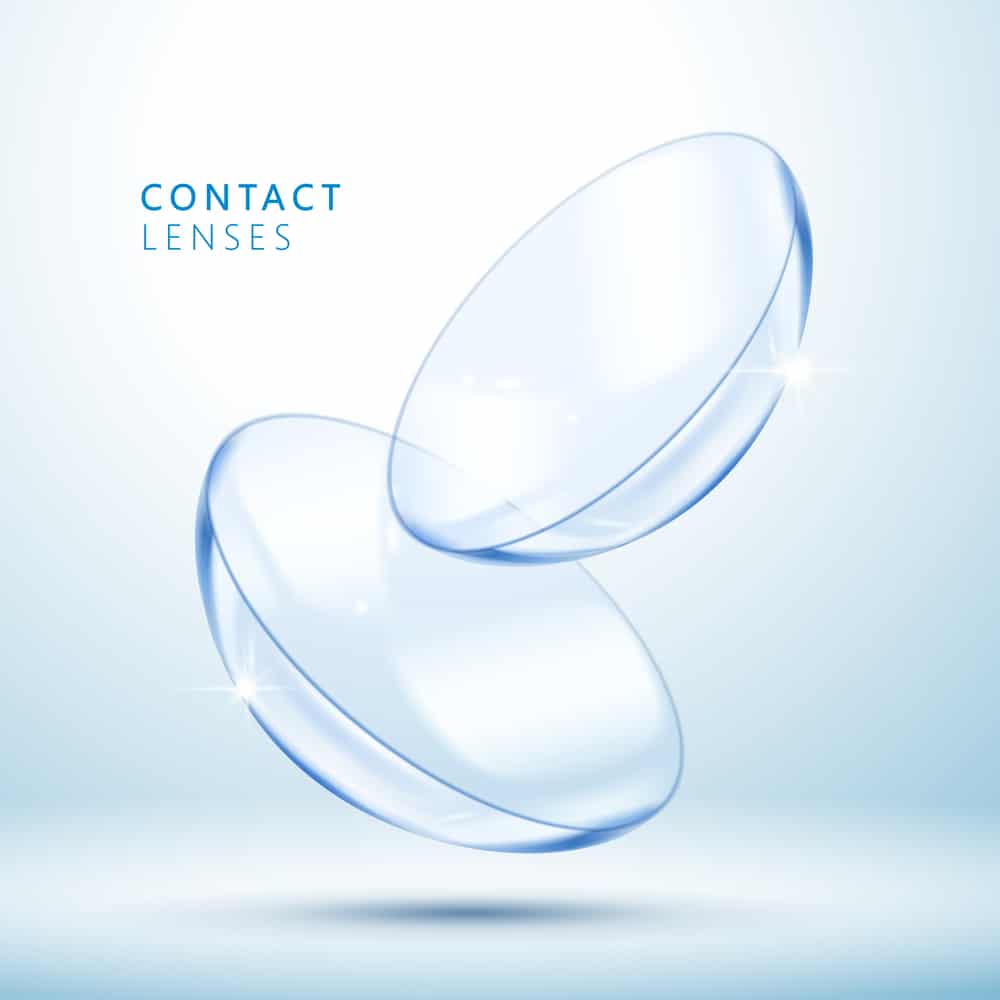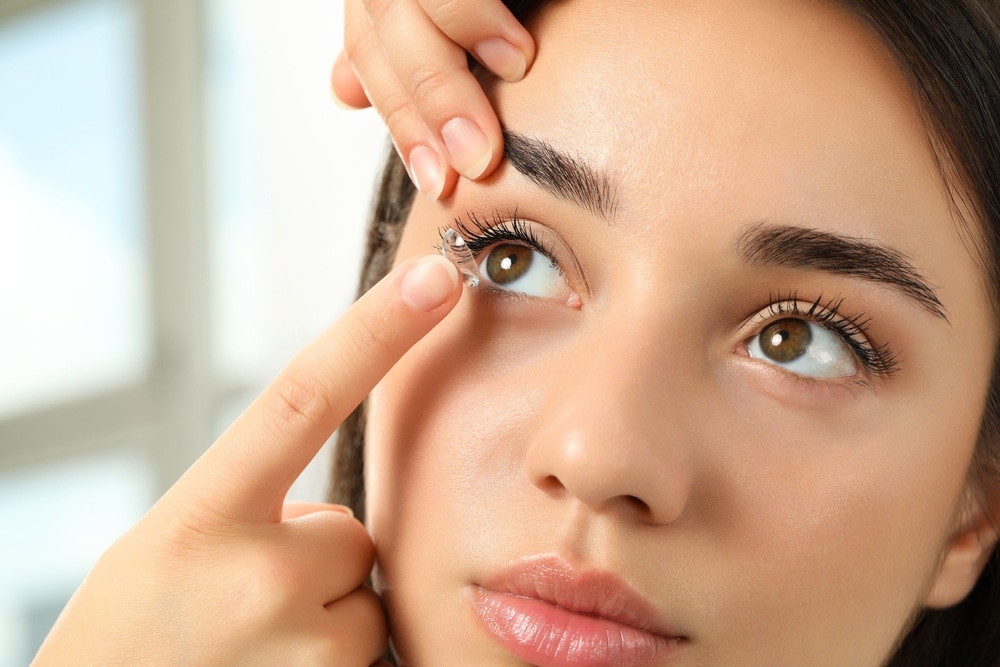Contact Lenses
Unlocking Crystal Clear Vision: The Ultimate Guide to Choosing and Caring for Contact Lenses!
Clear vision is a fundamental aspect of human experience, influencing our ability to see the world and engage in various activities with precision and confidence. The importance of clear vision cannot be overstated, as it directly impacts our daily lives, from reading and driving to participating in sports or simply appreciating the beauty around us. Unfortunately, many individuals grapple with vision impairments such as nearsightedness, farsightedness, or astigmatism, which can significantly hinder their visual acuity. In this context, contact lenses emerge as a pivotal solution, providing a seamless and effective means to correct refractive errors.
Unlike traditional eyeglasses, choosing contact lenses offers wearers an unobstructed field of view, eliminating the frames and reflections that may interfere with peripheral vision. Additionally, these eye-caring lenses conform to the eye’s curvature, ensuring a natural and unaltered perception of the surrounding environment. Beyond aesthetic considerations, clear vision enhances safety, productivity, and overall quality of life. Whether engaging in professional endeavors, pursuing educational goals, or simply enjoying recreational activities, individuals with clear vision are better equipped to fulfill their potential. Consequently, the role of contact lens in fostering and maintaining a clear vision is paramount, empowering people to fully participate in and appreciate life’s myriad experiences.
A Closer Look at Different Types of Contact Lenses Available
Various types of eye lenses come in various types, each designed to address specific vision needs and preferences. One of the primary distinctions is based on the material from which they are made:
- Daily Disposable: These lenses are worn once and discarded at the end of the day, eliminating the need for cleaning and maintenance.
- Bi-weekly/Monthly: Reusable lenses that require regular cleaning and storage. They are replaced every two weeks or monthly.
- Rigid Gas Permeable (RGP) Lenses: Made from a durable plastic material that allows oxygen to pass through to the cornea. RGP lenses provide crisp vision and are often prescribed for astigmatism or more complex vision issues.
- Extended Wear Lenses: These lenses are designed to be worn continuously, including overnight. They can be daily or extended wear, depending on the type.
- Toric Lenses: Specifically designed to correct astigmatism by accommodating the irregular shape of the cornea.
- Multifocal/Bifocal Lenses: This kind of lens caters to individuals with presbyopia, providing multiple prescriptions in one lens to address both near and far vision.
- Colored Lenses: These amazing lenses offer the dual function of vision correction and cosmetic enhancement, allowing wearers to change or enhance their eye color.
- Scleral Lenses: The big-sized lenses are designed to cover a larger portion of the eye, these lenses are often prescribed for irregular corneas or certain eye conditions.
- Hybrid Lenses: The fascinating lenses that combine features of both soft and rigid lenses, providing the comfort of soft lenses and the clarity of RGP lenses.

Choosing contact lenses depends on factors such as the individual’s lifestyle, prescription, comfort preferences, and any specific eye conditions. Individuals need to consult with an eye care professional to determine the most suitable option for their unique needs and to receive proper guidance on lens care and maintenance. Regular eye check-ups are also crucial to ensure that the prescription remains accurate and to monitor the overall health of the eyes while using contact lenses.
How to properly care for and clean your contact lenses?
There are certain things to know before caring for contact lenses to get the desired outcomes and avoid negative impact. Proper care and cleaning of lenses are essential to maintain eye health, ensure comfortable wear, and prevent infections. Here are general guidelines for caring for and cleaning your contact lens:
- Wash Your Hands:
- Always wash your hands with mild, fragrance-free soap and water before handling your eye lenses. Dry your hands with a lint-free towel to avoid transferring lint or debris to the lenses.
- Use the Right Solution:
- Choose a contact lens solution recommended by your eye care professional. Avoid using tap water or saliva, as they may contain harmful microorganisms.
- Remove Lenses Before Sleeping:
- Unless your lenses are approved for extended wear, remove them before sleeping to allow your eyes to breathe and reduce the risk of infections.
- Follow the Recommended Replacement Schedule:
- It is crucial to follow the recommended replacement schedule for your specific type of contact lens. Daily disposable lenses should be discarded after a single use, while others may have a bi-weekly or monthly replacement schedule.
- Clean and Disinfect Regularly:
- One of the crucial tips covered under caring for contact lenses is to rub and rinse your lenses with the recommended solution, even if it is a “no-rub” formula. This helps remove debris and protein deposits that can accumulate on the lenses.
- Store Lenses Properly:
- Use a clean lens case and fill it with fresh solution each time you store your lenses. Replace your lens case every three months or sooner if it becomes damaged.
- Avoid Water Exposure:
- Keep your lenses away from water, including swimming pools, hot tubs, and showers. Water can introduce harmful bacteria and microorganisms to your lenses.
- Follow Your Eye Care Professional’s Instructions:
- This is mandatory to follow the specific care instructions provided by your eye care professional. They may have personalized recommendations based on your eye health and the type of lenses you wear.
If you experience any discomfort, redness, or changes in vision while wearing contact lens, remove them immediately and consult your eye care professional. Proper care and hygiene are crucial to enjoying the benefits of contact lens while minimizing the risk of complications.

Common mistakes to avoid when wearing contact lens
Wearing contact lenses can be a convenient and comfortable way to correct vision, but it’s important to avoid common mistakes to ensure eye health and optimal vision. Here are some common mistakes to steer clear of when wearing contact lens:
- Sleeping in Lenses Not Designed for Extended Wear: Some eye lens are designed for extended wear, allowing you to sleep in them. However, most lenses require removal before sleeping to prevent reduced oxygen flow to the cornea and the risk of eye infections.
- Using Tap Water or Saliva to Clean Lenses: Tap water and saliva can introduce harmful microorganisms to your lenses, leading to infections. Always use the recommended contact lens solution for cleaning and storing your lenses.
- Overusing or Ignoring Replacement Schedules: Follow the prescribed replacement schedule for your lenses. Overusing or ignoring replacement schedules can lead to a build-up of debris and protein deposits, reducing lens comfort and increasing the risk of eye infections.
- Skipping Regular Eye Exams: Regular eye exams are crucial, even if you don’t experience any vision changes. Eye exams help monitor your eye health, update your prescription, and ensure the proper fit of your eye lenses.
- Not Washing Hands Before Handling Lenses: Clean hands are essential when handling eye lenses. Failing to wash your hands thoroughly before touching your lenses can transfer dirt, oils, or bacteria to the lenses and increase the risk of eye infections.
- Wearing Lenses Past Their Expiry Date: Eye lenses have an expiration date for a reason. Using lenses past their expiry date can compromise their effectiveness and safety.
- Using Expired or Contaminated Solutions: Always check the expiration date on your contact lens solution, and never use solutions that appear cloudy or contaminated. The use of expired or contaminated solutions can lead to eye irritation and infections.
By avoiding these common mistakes and starting caring for contact lenses, you can enjoy the benefits of contact lenses while minimizing the risk of complications and ensuring the health of your eyes. The simple act of following recommended cleaning routines, adhering to replacement schedules, and seeking regular eye check-ups contributes significantly to maintaining optimal vision and preventing potential complication



